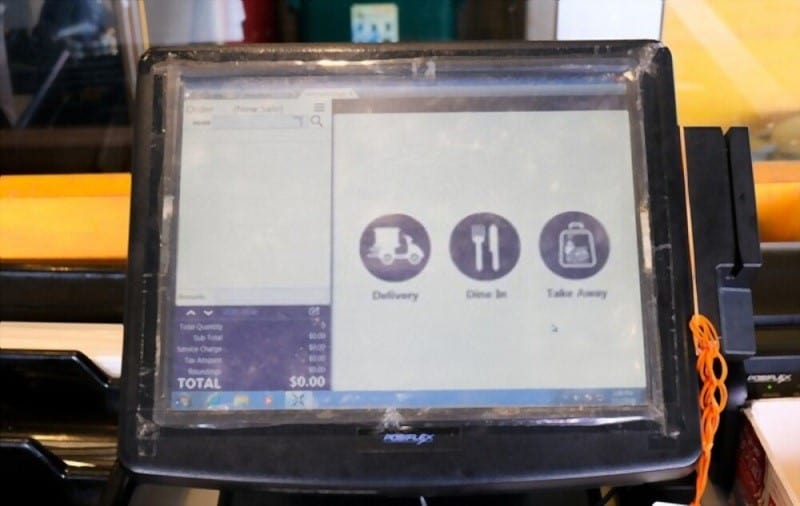KDS Systems for Restaurants – 7 Key Reasons to Invest and Upgrade Your Technology

In the hospitality industry, much is made of front-end services and technology, but little is spoken of the back-end. Kitchen and back-of-house staff are the backbone of any successful food venture. In order to maximize their work, restaurants must invest in the appropriate kitchen display systems.
The introduction of intuitive touch screen technology brings an array of benefits – whether you run a quicks service takeaway outlet or a fine dining restaurant. Throughout this article, we’ll dive into the foremost improvements and benefits you can receive when investing in a new KDS system.

What is a KDS?
Before we dive too deep into intricate features and processes, let’s establish exactly what a KDS system offers and how they work. A KDS (Kitchen Display System) is a digital screen situated in the kitchen area that is primarily used to record and track any food orders.
Importantly, a KDS is synchronised with the greater point-of-sale system to provide real-time data. This not only tracks orders and inventory, but also financial metrics that are far more convenient than the old system of paper dockets.
Depending on the model, a kitchen display will often display the recipes, estimated prep time and the required procedure on the screen. An inherent feature is the ability to categorise orders and simultaneously create a list based upon fulfilment priority.
Speed:
In the past, waiters and waitresses received orders and recorded them on a pad of paper. Orders were then transitioned to the kitchen and put in place according to priority or urgency. While this system did have its merit, the speed and accuracy offered by modern KDS units are unparalleled.
A quick flow of information is vital for kitchen staff and managers that will help the entire staff to stay on top of busy periods and shifts. In addition, the work is also made easier for hardworking waiters, waitresses and counter hands.
Streamline Operations:
The introduction of KDS systems for restaurants can be a crucial element of a greater POS (point-of-sale) network. What does this mean? As data is tracked and recorded in real-time, various everyday practices can be measured. This includes everything from inventory and stock to employee timesheets, pay cycles and more.
In terms of kitchen operations, the kitchen display screen makes everyone’s role clear, from the head chef down to kitchen hands and dishwashing staff. Dealings between the waiting and kitchen staff will also become far smoother.
Improve Customer Experience:
In the current age of endless choice and convenience, all food outlets must prioritise the experience of their customers. More than ever before, a dissatisfied customer has real and tangible effects on your restaurant’s reputation and bottom line.
Dissatisfied customers may leave negative reviews, seek out alternative restaurants or replay their experience to friends, family and colleagues. KDS technology improves the customer experience because it both minimises the chance of human error and speeds up the entire order process from the front to back end.
Tracking Important Information:
Kitchens are a fast-moving and demanding environment. In order to stay on top of breakfast, lunch or dinner sessions, kitchen staff must have easy access to the necessary information. This information could include order details, ingredients, recipes and time requirements.
As we noted earlier, modern KDS technology is best utilised when connected to a greater point-of-sale network. Importantly, this streamlining of meals and orders keeps track of the stock required for each round of service.
Clarity:
One of the core reasons why countless restaurants have made the switch to KDS technology is clarity. The screens promptly outline the order placed in detail. For instance, if a patron orders a dozen Buffalo wings with BBQ sauce, all of this data is displayed in a clear fashion for the kitchen and preparation staff.
Once an order is received and displayed on the kitchen screen, the KDS often outlines the recipe, ingredients and sizing. As this information is tracked in real-time, serving staff also gain greater clarity on an ETA. For example, the server will be able to relay this info straight to the customer.
Reduce Errors:
Errors are impossible to eliminate completely and remain a natural part of any hospitality operation. However, there are tangible ways to minimise and reduce mistakes in the course of service. Under a KDS system, waiting for staff can instantly transmit orders to the kitchen and vice versa.
Taking an order down from memory or even on a notepad has its inherent flaws. Servers receive a notification whenever there’s an update from the kitchen display, delivered directly to their tablet. This will instruct them to pick up the food and deliver it to the customers/place it on their table. Further, this also applies to any dealings with third-party delivery staff/personnel.
Reduce Waste:
As anyone in the restaurant business can attest to, a fine balance exists between the stock ordered and the stock required for day-to-day operations. Therefore, when the information is readily accessible on the kitchen display screen, chefs, kitchen staff and restaurant managers gain a clearer picture of how many ingredients are needed.
Instead of throwing away excess stock and inventory, upgrading to a KDS allows restaurants to be far more sustainable and efficient in their food intake. For franchise owners, this is also an effective way to save a significant amount of money across multiple locations.

Reach Out to a Supplier:
If you’re considering KDS Systems for your restaurant or food chain, seek out specialist providers and manufacturers. You can also track examples of this technology the next time you visit a KDS-based food outlet.
An experienced supplier will be able to relay important technological information and address any questions or concerns you may have – particularly regarding costs, installation and maintenance. At the same time, your business can also explore an entirely new point-of-sale network. POS systems are an excellent way to grow, integrate data and streamline daily operations.